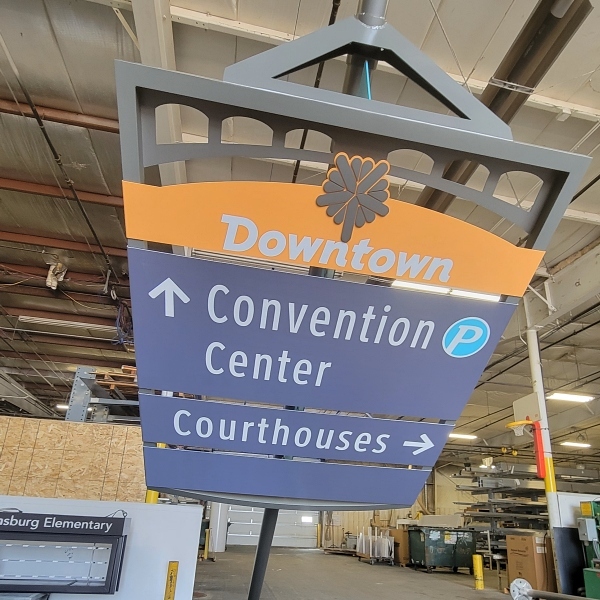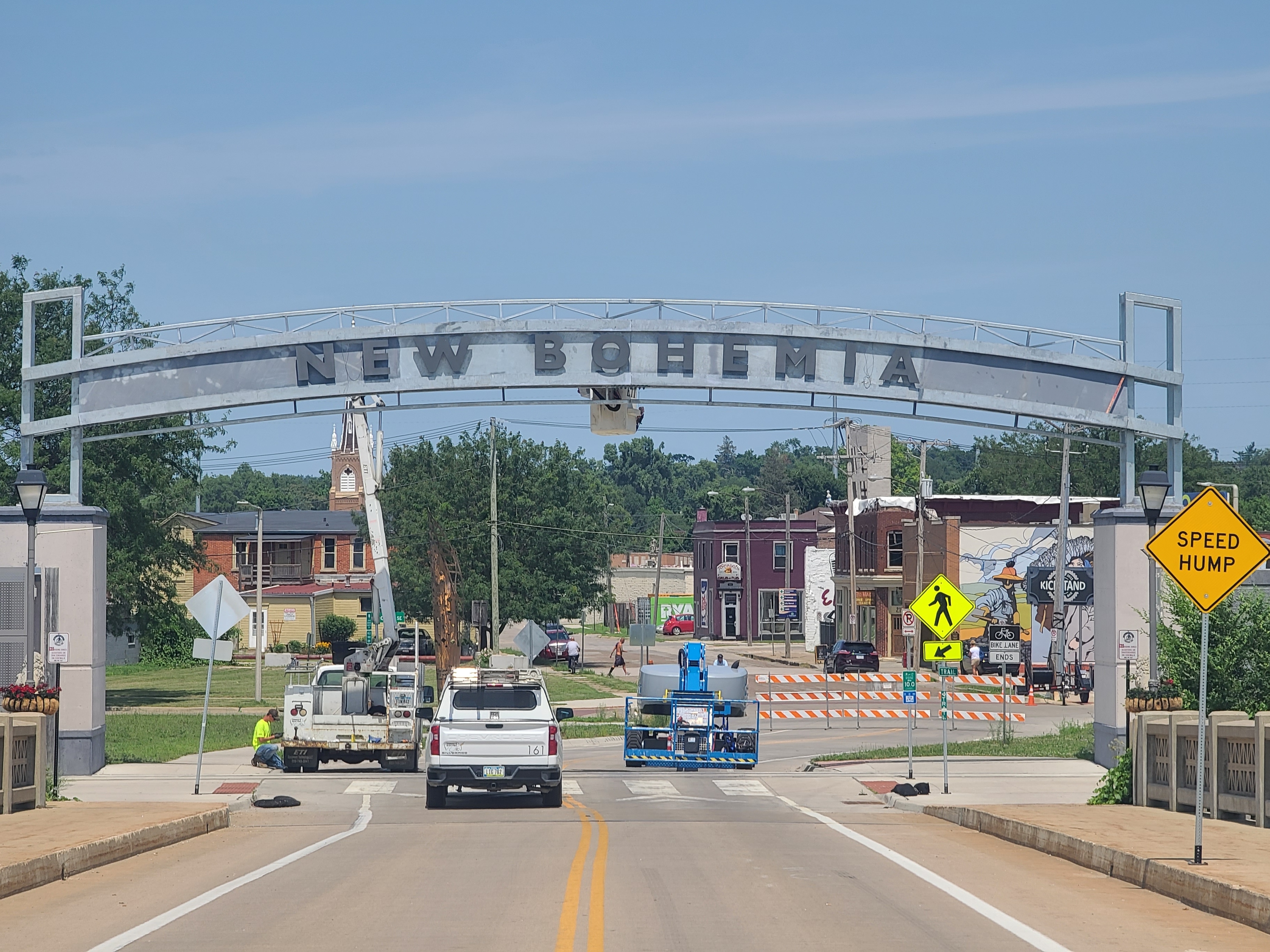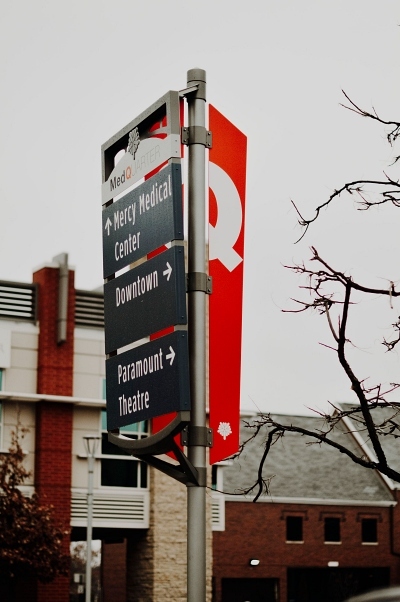
We’re in the thick of fabrication for the second phase of Cedar Rapids streetscape signage project. So, we thought we’d address just why a city’s streetscape signage plays such a crucial role in the visitor experience. Partnering with our friends at Latitude Signage + Design and Corbin Design. These signs were well planned and designed for the second largest city (136k) in Iowa.

Large cities often have complex layouts, numerous streets, and various landmarks. Streetscape signage provides clear directions, maps, and symbols that guide them to their desired destinations, such as tourist attractions, transportation hubs, or specific districts. Effective signage reduces confusion, saves time, and minimizes the frustration of getting lost.
Cities are diverse and attract visitors with different needs and abilities. Streetscape signage can be designed with clear and well-placed symbols, tactile elements, and braille information ensures that everyone can access and understand the directions, regardless of their physical or cognitive abilities.
In crowded urban areas, safety is paramount. Wayfinding signage helps visitors identify emergency exits, evacuation routes, and essential services like hospitals, police stations, or public restrooms. In the event of an emergency or natural disaster, clear signage aids in the smooth movement of people, reducing panic and potential risks.
Large cities often boast a wealth of cultural, historical, and recreational opportunities. By strategically placing signage and providing information about nearby points of interest, cities can help visitors make serendipitous discoveries, enhancing their overall experience.


Streetscape signage contributes to the branding and identity of a city. Consistent and well-designed signage can convey the unique character, culture, and spirit of a place. It can incorporate city branding, local aesthetics, landmarks, or historical references, creating a cohesive visual identity that resonates with visitors and fosters a sense of place.
When visitors can easily navigate a city and find what they are looking for, it significantly enhances their satisfaction. Positive experiences are more likely to lead to repeat visits and recommendations to others.
Overall, streetscape signage is essential for a great visitor experience in all cities, but especially large cities. It simplifies navigation, promotes inclusivity, ensures safety, facilitates local exploration, strengthens the city’s identity, and contributes to visitor satisfaction.
